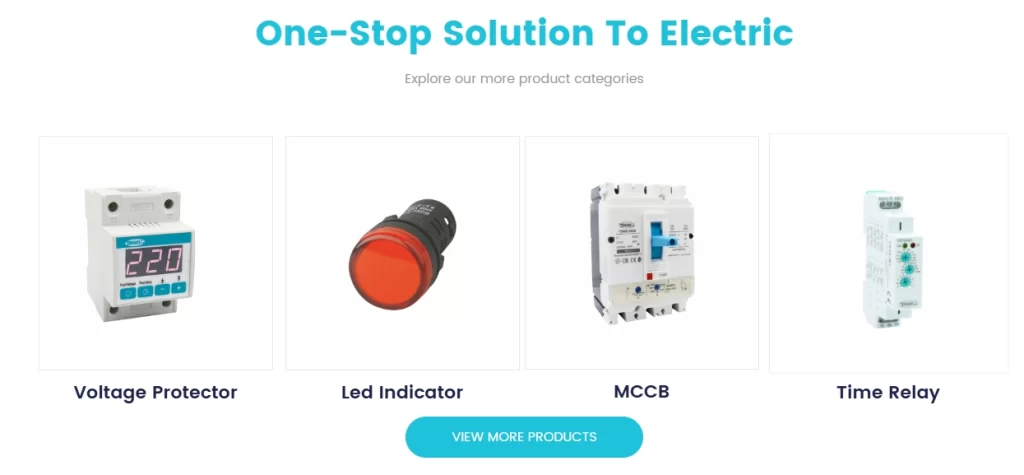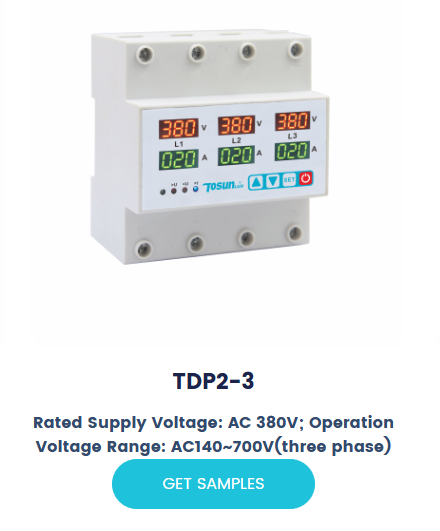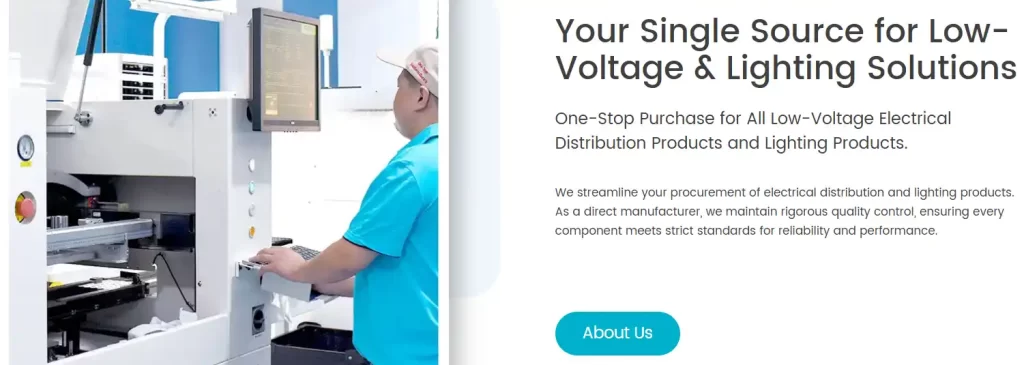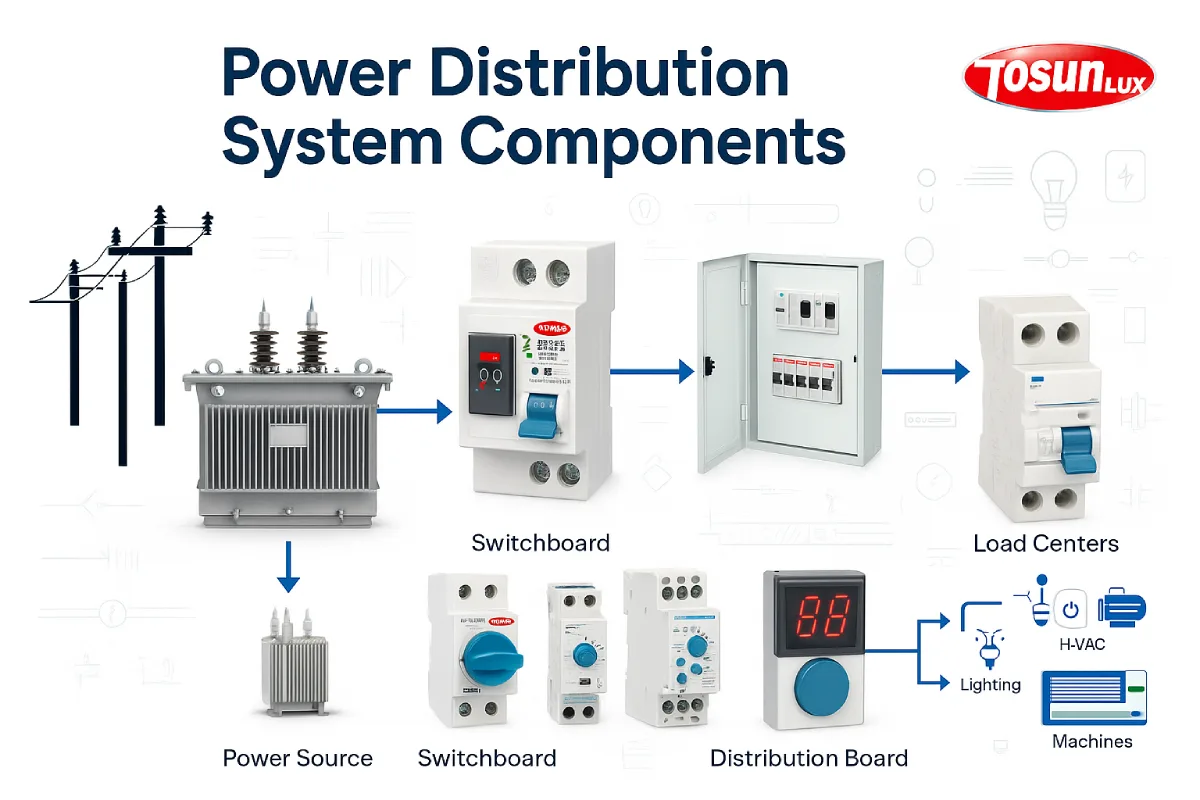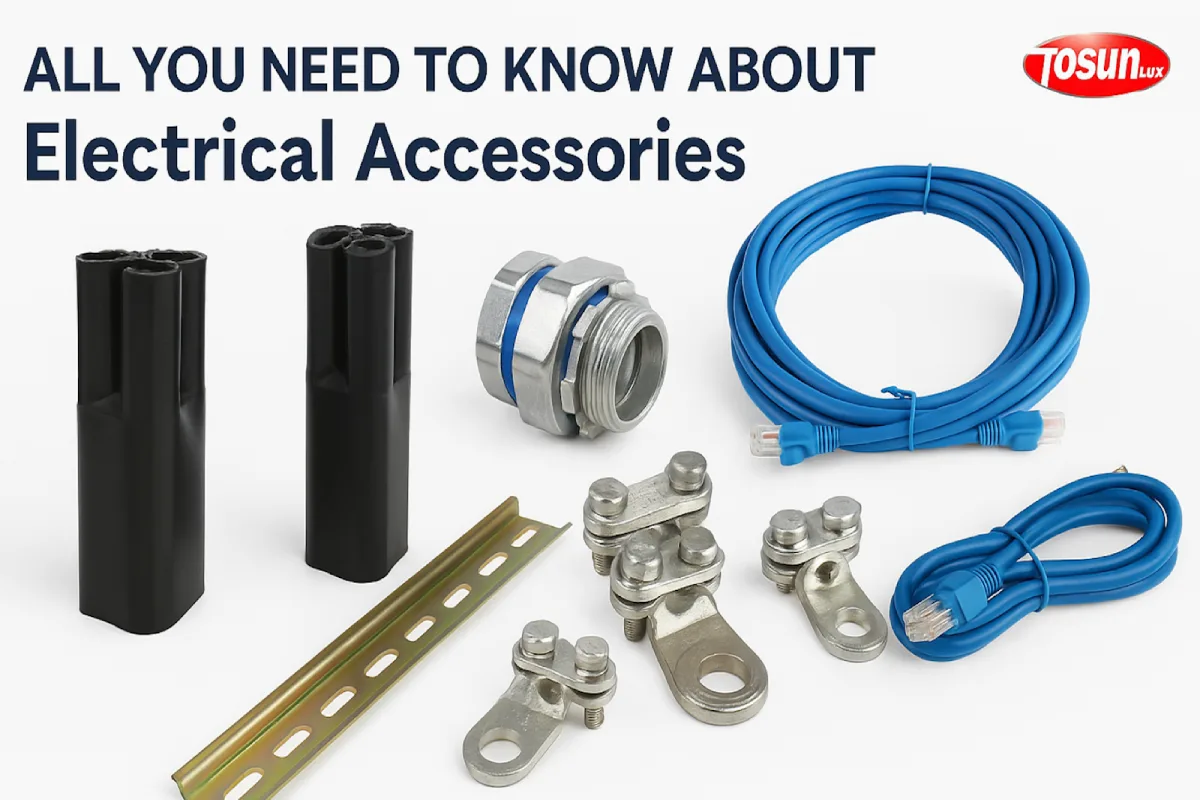Mbrojtës tensioni kundrejt mbrojtësit të mbitensionit: Cili ju nevojitet vërtet?
Tabela e Përmbajtjes
NdryshoTekst alternativ: Teknik që monitoron sistemet e kontrollit në një strukturë industriale të energjisë
Kur zgjidhni midis një mbrojtësi të tensionit dhe një mbrojtësi të mbitensionit, mund të duket konfuze.
Të dyja pretendojnë se mbrojnë pajisjet tuaja, por ato trajtojnë dy kërcënime të dallueshme elektrike: rritje të papritura të tensionit kundrejt luhatjeve të vazhdueshme të tensionit.
Ky ndarje e mbrojtësit të mbitensionit kundrejt mbrojtësit të tensionit do t'ju ndihmojë të kuptoni qartë se çfarë bën secili prej tyre - dhe kur keni nevojë për të dyja.

Çfarë bën një mbrojtës nga mbingarkesa
A mbrojtës i mbitensionit është si një mbrojtëse për pajisjet tuaja. Qëndron roje në prizë, gati për të thithur ose devijuar luhatjet e papritura të tensionit - ato rritje të shkurtra të shkaktuara nga rrufeja, ndërrimi i rrjetit ose ndezja ose fikja e pajisjeve të mëdha.
Këto rritje të tensionit mund të arrijnë mijëra volt në vetëm mikrosekonda, duke dëmtuar qarqet sot dhe duke i degraduar ato nesër.
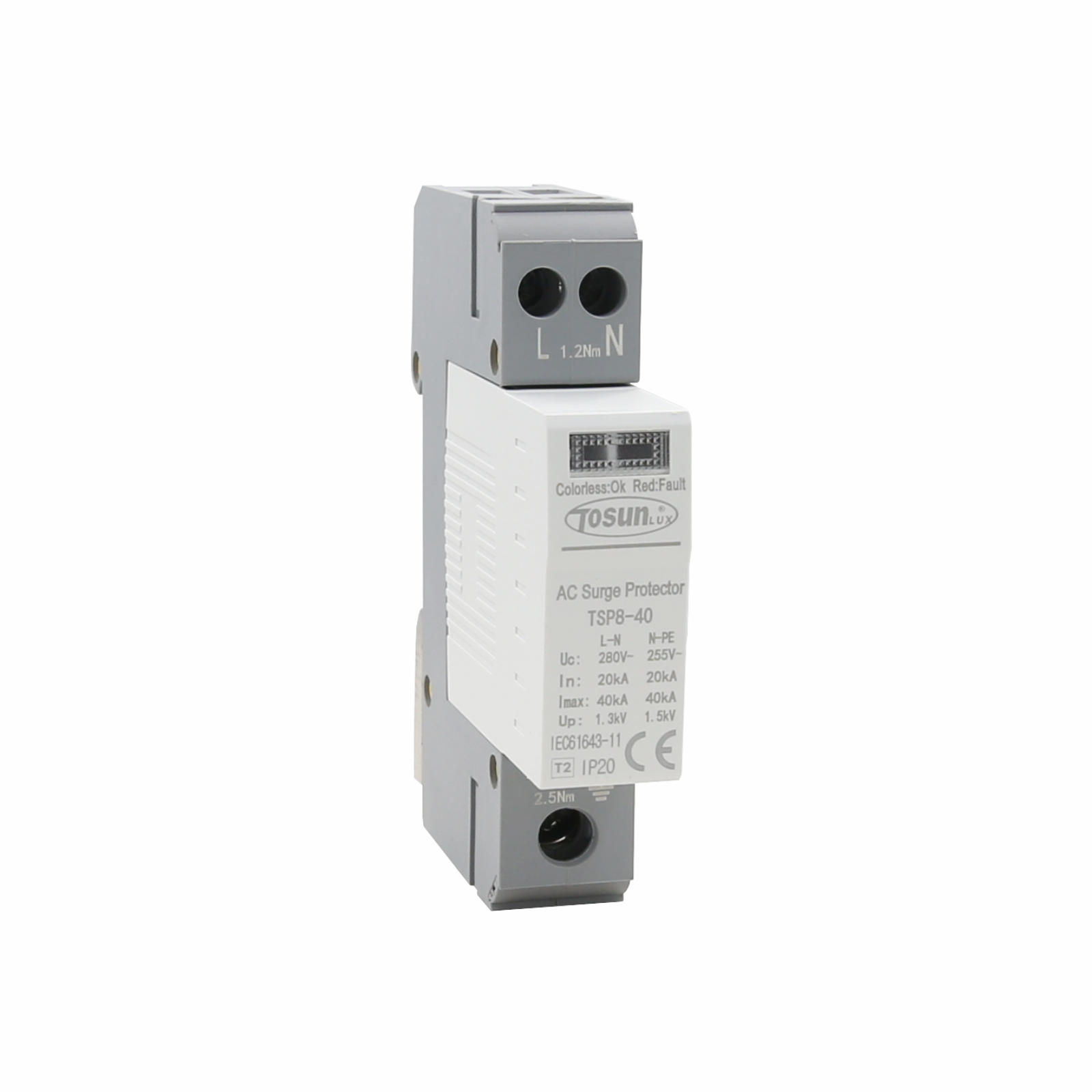
Specifikimet kryesore:
- Tensioni i fiksimitKur aktivizohet, zakonisht 330–500 V për sistemet 120 V.
- Vlerësimi i xhaulitEnergjia që mund të thithë për çdo rritje të tensionit - më e lartë do të thotë më shumë mbrojtje.
- Koha e përgjigjesBrenda nanosekondave, duke u siguruar që vala e tensionit të ndalet përpara se të dëmtojë pajisjet tuaja.
Shumica e zyrave duhet të instalojnë mbrojtës nga tensioni në formë shiriti dhe të marrin në konsideratë një pajisje tensioni për të gjithë ndërtesën në panelin kryesor për mbrojtje më të thellë.
Çfarë bën një mbrojtës tensioni (rregullator/stabilizues)
A mbrojtëse e tensionit, i njohur edhe si rregullator ose stabilizues i tensionit, monitoron dhe rregullon tensionin me kalimin e kohës.
Ai mbron nga nën-tensionet e vazhdueshme (rëniet e tensionit) ose mbi-tensionet që mund të shkurtojnë jetëgjatësinë e pajisjeve, të shkaktojnë gabime ose të shkaktojnë fikje. Kjo është jetike në rajonet me furnizim të paqëndrueshëm.
Modelet variojnë nga AVR-të e bazuara në servomotorë deri te njësitë dixhitale me teknologji të lartë që rregullojnë daljen në një nivel të saktë dhe të sigurt (p.sh., 220 V ±1%). Ndryshe nga mbrojtësit e mbitensionit që reagojnë pas një rritjeje të tensionit, këto kontrollojnë në mënyrë aktive tensionin për të siguruar që pajisjet të funksionojnë pa probleme.
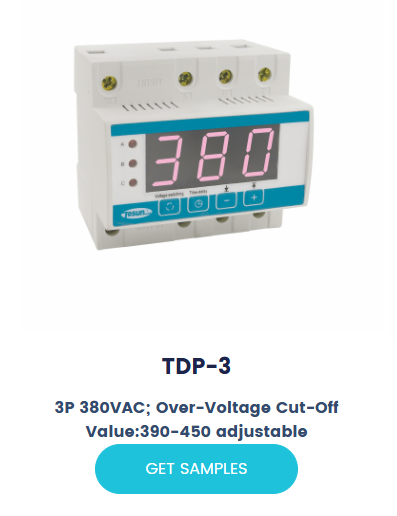
Mbrojtës i mbitensionit kundrejt Rregullatorit të Tensionit: Krahasim krah për krah
| Veçori | Mbrojtësi i mbitensionit | Mbrojtës/Stabilizues Tensioni |
| Mbron nga thumbat | ✅ | ❌ |
| Rregullon nivelet e tensionit | ❌ | ✅ |
| Më e mira për rrufetë/rritje të tensionit | ✅ | ❌ |
| Më e mira për rënie/rritje të tensionit afatgjatë | ❌ | ✅ |
| Kosto tipike | Poshtë (niveli i shiritit/prizës) | Më i lartë (AVR ose njësi paneli) |
Përfundimi: Përdorni mbrojtës nga mbingarkesa për rritje të shpejta dhe të shkurtra të tensionit. Përdorni mbrojtës nga tensioni kur rrjeti juaj arrin një nivel të ulët ose të lartë dhe qëndron aty.
Mbrojtës nga mbingarkesa kundrejt mbrojtësit të tensionit: Kur ju nevojiten të dyja
Problemet me energjinë elektrike shpesh vijnë në çifte. Nëse keni të bëni me luhatje të tensionit dhe rritje të papritura të tensionit, përdorimi i vetëm një lloji mbrojtjeje nuk është i mjaftueshëm.
Ja kur kombinimi i një mbrojtësi nga mbingarkesa dhe një mbrojtësi nga tensioni ka kuptim:
- Ju përjetoni ndërprerje të shpeshta të tensionit ose mbitension — mbrojtësi juaj i tensionit do t'i mbajë pajisjet në funksionim brenda kufijve të sigurt.
- Zona juaj ka stuhi me rrufe ose ndërrime të rrjetit elektrik — një mbrojtës nga mbingarkesa thith ato rritje të tensionit të lartë përpara se të arrijnë në pajisjet tuaja.
- Ju mbështeteni në pajisje të ndjeshme si makinat industriale, kompjuterët ose pajisjet mjekësore — ato kanë nevojë si për tension të qëndrueshëm ashtu edhe për mbrojtje nga tronditjet e papritura.
- Ju kryeni operacione në zona me rrjete energjie të paqëndrueshme ose të mbingarkuara — nivelet e tensionit dhe rreziqet e mbingarkesës shpesh shkojnë dorë për dore.
Në këto raste, mbrojtja më e mirë është një konfigurim i kombinuar: mbrojtësi i tensionit i zbut gjërat, ndërsa mbrojtës i mbitensionit mbrohet nga e papritura.
Temperatura, Motorët dhe Pajisjet e Tjera të Ndjeshme
Disa pajisje nuk janë vetëm të shtrenjta - ato janë edhe të brishta kur bëhet fjalë për ndryshimet e tensionit. Motorët, kompresorët, pajisjet mjekësore dhe serverët reagojnë keq si ndaj luhatjeve të tensionit ashtu edhe ndaj problemeve afatgjata të tensionit. Ja pse të dy mbrojtësit janë të rëndësishëm për këto lloje pajisjesh:
- Motorë dhe kompresorëTensioni i ulët i bën ato të mbinxehen dhe të tërheqin më shumë rrymë, duke shkurtuar jetëgjatësinë e tyre ose duke i djegur plotësisht.
- Serverat dhe kompjuterëtRritjet e papritura të tensionit mund të djegin menjëherë komponentët, ndërsa tensioni i paqëndrueshëm mund të dëmtojë të dhënat ose të shkaktojë rinisje.
- Pajisje mjekësore ose laboratorikePreciziteti ka rëndësi. Edhe luhatjet e vogla të tensionit mund të shkaktojnë gabime kalibrimi ose mbyllje të papritura.
Këto pajisje shpesh nuk të japin një paralajmërim—ato thjesht dështojnë. Një mbrojtës tensioni e mban performancën të qëndrueshme, ndërsa një mbrojtës nga mbingarkesa parandalon dëmtimet katastrofike.
Nëse kohëzgjatja e funksionimit dhe besueshmëria kanë rëndësi, përdorimi i të dyjave nuk është i tepërt - është mbrojtje standarde.
Zgjedhja e pajisjes së duhur për kushtet tuaja të energjisë
Zgjedhja midis një mbrojtësi tensioni kundrejt një mbrojtësi nga mbingarkesa fillon me kuptimin e mjedisit dhe pajisjeve tuaja.
Ja një listë e thjeshtë kontrolli për t'ju udhëhequr në vendimin tuaj:
- A janë të zakonshme rëniet ose ndërprerjet e tensionit aty ku operoni? Merrni një mbrojtës ose stabilizues tensioni për të parandaluar tendosjen e tensionit të ulët.
- A përballeni me rritje të herëpashershme të energjisë, veçanërisht gjatë stuhive ose ndërrimit të rrjetit? Instaloni një mbrojtës nga mbitensionet në nivelin e prizës ose të panelit.
- A përdorni pajisje të ndjeshme dhe me vlerë të lartë? Përdorni të dyja - rritjen e tensionit për mbrojtje të shpejtë, rregullatorin e tensionit për performancë afatgjatë.
- Keni nevojë për mbrojtje të plotë të ndërtesës? TOSUNlux ofron si mbrojtës nga mbitensionet për përdorim të fortë, ashtu edhe rregullatorë të përparuar të tensionit që mund të instalohen në panelet e shpërndarjes.
Kontrolloni gjithashtu:
- Vlerësimi i xhaulit për mbrojtësit e mbitensionit (më i lartë = më mirë).
- Diapazoni i rregullimit për pajisjet e tensionit (±1% është ideale).
- Ekrani dhe kontrollet dixhitale për monitorim dhe precizion—TOSUNlux i ofron këto në modelet e tyre të përparuara.
Mbrojtës tensioni kundrejt stabilizuesit - E njëjta gjë?
Një pyetje e zakonshme është ndryshimi midis mbrojtësit të mbitensionit dhe rregullatorit të tensionit, ose midis një mbrojtësi të tensionit dhe një stabilizatori. Këto terma ngatërrohen shumë, por ja ndryshimi i vërtetë:
- Mbrojtës tensioniShpesh i referohet një pajisjeje të thjeshtë që ndërpret energjinë elektrike nëse voltazhi shkon shumë lart ose shumë ulët.
- Stabilizues tensioniNjë pajisje më e përparuar që korrigjon në mënyrë aktive tensionin në një nivel të sigurt dhe të qëndrueshëm.
Por në shumë përshkrime produktesh - veçanërisht për modelet dixhitale - të dy termat përdoren në mënyrë të ndërsjellë.
Për të bërë zgjedhjen e duhur, kërkoni:
- Ekran dixhital ose monitorim inteligjent — ju tregon se është një stabilizues me korrigjim në kohë reale.
- Funksioni i ndërprerjes automatike — shton mbrojtje kur tensioni tejkalon kufijtë e sigurisë.
- Rregullimi i bazuar në motor servo ose AVR — do të thotë se mund ta rregullojë tensionin në mënyrë aktive, jo vetëm të shkëputet.
TOSUNlux ofron të dy llojet, duke përfshirë rregullatorë inteligjentë me ekrane dhe cilësime të programueshme për pajisje të ndjeshme. Siguroni asetet tuaja me mbrojtjen elektrike TOSUNlux.
Na kontaktoni sot për të pyetur!
Tel: +86-577-88671000
Email: ceo@tosun.com
Skype: deri në energji elektrike
Wechat: +86-139 6881 9286
WhatsApp: +86-139 0587 7291
Adresa: Dhoma Nr. 1001 Wenzhou Fortune Center, Station Road, Wenzhou, Kinë
KËRKONI NJË KUOT
Na WhatsApp
 : +86-139 0587 7291
: +86-139 0587 7291 anglisht
anglisht Español
Español Русский
Русский Français
Français Arabisht
Arabisht Português në Brazil
Português në Brazil Ukrainas
Ukrainas Türkçe
Türkçe Polski
Polski Hollanda
Hollanda Italiano
Italiano Bahasa Indonesia
Bahasa Indonesia हिन्दी
हिन्दी اردو
اردو አማርኛ
አማርኛ shqip
shqip ไทย
ไทย mongolisht
mongolisht gjuha shqipe
gjuha shqipe Shqip
Shqip English
English

